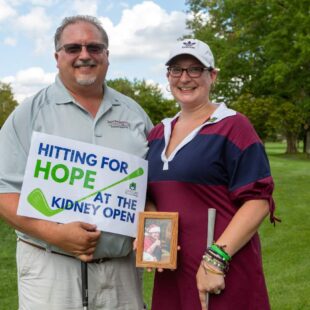treatment
Authors: Leora Aizman, BS; Thuzar M. Shin, MD
University of Pennsylvania High-Risk Skin Cancer Clinic for Organ Transplant Patients

Skin cancer occurs in one out of every five people,1 but solid organ transplant recipients are at a higher risk than the general population. Skin cancer is the most common cancer after transplant,2 affecting up to 70% of patients.3 Fortunately, this condition is potentially preventable and easily treated when caught early. The best ways to protect yourself are to understand your risks and follow practices to prevent the development and progression of skin cancer.
Transplant patients are at increased risk for skin cancer because immunosuppressive medications, which are necessary for the health of transplanted organs, decrease the body’s defenses against skin cancer. The longer recipients are taking immunosuppressive medications and the higher the dose, the more likely skin cancer is to develop.2,4 It is important to recognize that skin cancer also occurs at much younger ages in transplant recipients. They usually begin to develop five to seven years after a transplant, but may develop sooner in older patients2 or in patients who have had a skin cancer prior to transplant.5 Not all transplant recipients are affected equally. Heart transplant recipients, followed by kidney recipients, are the most likely to develop skin cancer.4

The three main types of skin cancer are: squamous cell carcinoma, basal cell carcinoma, and melanoma. Squamous cell carcinoma is the most common type of skin cancer in the transplant population and is 65-times more likely to occur in transplant recipients than in the general population.6 Squamous cell carcinomas appear as small pink spots with a scaly surface and usually develop on areas exposed to sunlight, such as the head, neck, and hands. Basal cell carcinomas frequently occur in similar locations, but look like shiny pink bumps or patches. Melanoma is the least common, but deadliest, form of skin cancer and usually appears as an irregularly-shaped brown spot or changing mole, often on the back or legs. All three types of skin cancers are curable if caught early, but may cause extensive local destruction and even death if left untreated.
There are a number of steps patients can take to reduce their risk of developing skin cancer. The transplant recipient is their own first line of defense. The first principle of skin protection is to avoid sun exposure and commercial tanning booths. Additional steps to minimize sun exposure include seeking shade, staying indoors during the hours of peak sunlight (10am-4pm), wearing sun-protective clothing (long-sleeved shirts and pants, broad-brimmed hats, sunglasses), and using a broad-spectrum sunscreen with SPF 30 or higher on exposed skin (which needs to be re-applied every 2 hours, sooner if you swim or sweat excessively). Monthly self-skin exams may help detect any new or changing growths or moles. This may be done by using a mirror to examine all parts of your body, including the palms, soles, and genitalia. In addition to self-skin exams, experts recommend a full-body skin examination with a board-certified dermatologist at least once a year.7 For very high-risk patients, even more frequent follow up with a dermatologist may be crucial to detecting and treating skin cancers early.
There are a variety of methods to treat skin cancer, including creams, scraping, and freezing for early cancers. More advanced cancers may require surgical removal. Mohs micrographic surgery is a special surgical procedure that removes skin cancer in layers, to preserve normal skin. For both treatment and prevention, skin care management should involve a close partnership between the patient and their transplant doctor and dermatologist.
References
1. Stern RS. Prevalence of a history of skin cancer in 2007: results of an incidence-based model. Arch Dermatol. 2010;146(3):279-282.
2. Mittal A, Colegio OR. Skin Cancers in Organ Transplant Recipients. Am J Transplant. 2017;17(10):2509-2530.
3. Bangash HK, Colegio OR. Management of non-melanoma skin cancer in immunocompromised solid organ transplant recipients. Curr Treat Options Oncol. 2012;13(3):354-376.
4. O’Reilly Zwald F, Brown M. Skin cancer in solid organ transplant recipients: advances in therapy and management: part I. Epidemiology of skin cancer in solid organ transplant recipients. J Am Acad Dermatol. 2011;65(2):253-261.
5. Garrett GL, Blanc PD, Boscardin J, et al. Incidence of and Risk Factors for Skin Cancer in Organ Transplant Recipients in the United States. JAMA Dermatol. 2017;153(3):296-303.
6. Perez HC, Benavides X, Perez JS, et al. Basic aspects of the pathogenesis and prevention of non-melanoma skin cancer in solid organ transplant recipients: a review. Int J Dermatol. 2017;56(4):370-378.
7. Crow LD, Jambusaria-Pahlajani A, Chung CL, et al. Initial skin cancer screening for solid organ transplant recipients in the United States: Delphi method development of expert consensus guidelines. Transpl Int. 2019;32(12):1268-1276.
Bridge to Life
TD Charitable Foundation
News & Events
Stay Connected
Sign up to receive email updates featuring transplant stories of hope and ways you can get involved with the Howie's House.
"*" indicates required fields







